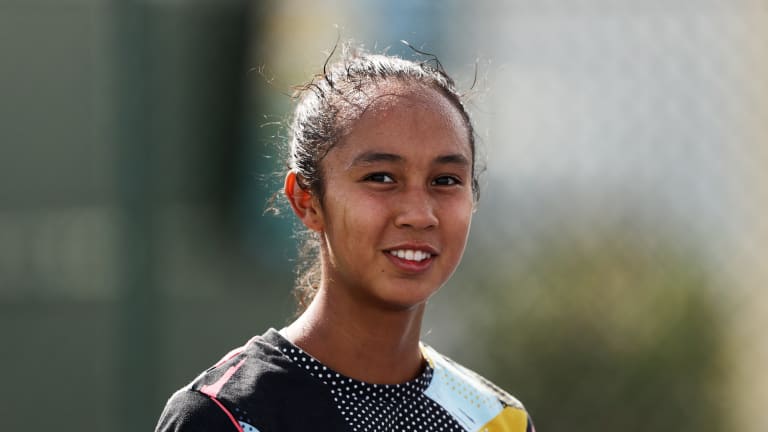Indian Wells, USA
Leylah the Lefty: Fernandez is the latest southpaw to shake up the game in a jarring and refreshing way
By Oct 12, 2021Indian Wells, USA
Mackenzie McDonald is paying the college tennis experience forward with a new fund
By Mar 17, 2025Indian Wells, USA
Mirra Andreeva and Jack Draper win breakthrough titles at Indian Wells: What did we just witness?
By Mar 17, 2025Indian Wells, USA
Jack Draper's run through Indian Wells concludes with his first ATP Masters 1000 title
By Mar 16, 2025Indian Wells, USA
Holger Rune vs. Jack Draper: Where to Watch, Indian Wells Preview, Betting Odds
By Mar 16, 2025Indian Wells, USA
Holger Rune reaches first Indian Wells final over Daniil Medvedev
By Mar 15, 2025Indian Wells, USA
Mirra Andreeva vs. Aryna Sabalenka: Where to Watch, Indian Wells Preview, Betting Odds
By Mar 15, 2025Indian Wells, USA
Mirra Andreeva, 17, advances to Indian Wells final, beating Iga Swiatek in chilly conditions
By Mar 15, 2025Indian Wells, USA
Ruthless Aryna Sabalenka storms past Madison Keys, 6-0, 6-1, in semifinals of Indian Wells
By Mar 15, 2025Indian Wells, USA
Carlos Alcaraz vs. Jack Draper: Where to Watch, Indian Wells Preview, Betting Odds
By Mar 15, 2025Indian Wells, USA
Leylah the Lefty: Fernandez is the latest southpaw to shake up the game in a jarring and refreshing way
Various studies have revealed that in sports defined by time pressure, left-handers have a visual advantage—and a fundamentally effective sense of creativity.
Published Oct 12, 2021
Advertising
Advertising

To a great degree, Fernandez’s current success has less to do with pace and is more about space: her ability to vary direction and take away response time by hitting the ball early.
© Getty Images
Advertising

Various studies have revealed that in sports defined by time pressure, left-handers have a visual advantage—and a fundamentally effective sense of creativity.
© Getty Images